LGR4 promotes proliferation and homing via activation of the NF‑κB signaling pathway in multiple myeloma
- PMID: 39749708
- PMCID: PMC11753772
- DOI: 10.3892/ijo.2025.5718
LGR4 promotes proliferation and homing via activation of the NF‑κB signaling pathway in multiple myeloma
Abstract
Multiple myeloma (MM) is a plasma cell malignancy characterized by clonal proliferation in the bone marrow (BM). Previously, it was reported that G‑protein‑coupled receptor 4 (LGR4) contributed to early hematopoiesis and was associated with poor prognosis in patients with MM. However, the mechanism of cell homing and migration, which is critical for MM progression, remains unclear. In the present study, cell counting, cell cycle and BrdU assays were performed to evaluate cell proliferation. Transwell assay and Xenograft mouse models were performed to evaluate cell migration and homing ability both in vitro and in vivo. I was found that overexpression of LGR4 promotes MM cell adhesion, migration and homing to BM both in vitro, while exacerbating osteolytic bone destruction in vivo. However, the LGR4 knockdown displayed the opposite effect. Further mechanistic studies demonstrated that LGR4 activated the nuclear factor kappa B (NF‑κB) signaling pathway and migration‑related adhesion molecule, thus promoting MM cell homing. Moreover, inhibiting the NF‑κB pathway was found to suppress MM cell homing. These findings identify LGR4 as a critical regulator of myeloma cell migration, homing and tumorigenesis, offering a potential therapeutic strategy for MM treatment.
Keywords: LGR4; cell homing; multiple myeloma.
Conflict of interest statement
The authors declare that they have no competing interests.
Figures
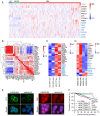
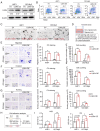

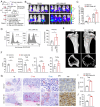
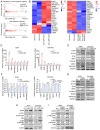
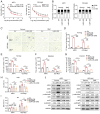
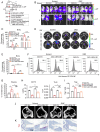

Similar articles
-
The role of LGR4 in bone metabolism and tumor bone metastasis.Front Endocrinol (Lausanne). 2025 May 21;16:1541601. doi: 10.3389/fendo.2025.1541601. eCollection 2025. Front Endocrinol (Lausanne). 2025. PMID: 40469438 Free PMC article. Review.
-
LGR4 promotes tumorigenesis by activating TGF-β1/Smad signaling pathway in multiple myeloma.Cell Signal. 2023 Oct;110:110814. doi: 10.1016/j.cellsig.2023.110814. Epub 2023 Jul 18. Cell Signal. 2023. PMID: 37473901
-
GPCR48/LGR4 promotes tumorigenesis of prostate cancer via PI3K/Akt signaling pathway.Med Oncol. 2015 Mar;32(3):49. doi: 10.1007/s12032-015-0486-1. Epub 2015 Jan 31. Med Oncol. 2015. PMID: 25636507
-
Baicalein inhibits cell proliferation and induces apoptosis in brain glioma cells by downregulating the LGR4-EGFR pathway.Cancer Gene Ther. 2024 Dec;31(12):1856-1867. doi: 10.1038/s41417-024-00825-0. Epub 2024 Oct 28. Cancer Gene Ther. 2024. PMID: 39468312 Free PMC article.
-
Migration, adhesion and differentiation of malignant plasma cells in the 5T murine model of myeloma.Verh K Acad Geneeskd Belg. 2003;65(2):127-34. Verh K Acad Geneeskd Belg. 2003. PMID: 12870183 Review.
Cited by
-
The role of LGR4 in bone metabolism and tumor bone metastasis.Front Endocrinol (Lausanne). 2025 May 21;16:1541601. doi: 10.3389/fendo.2025.1541601. eCollection 2025. Front Endocrinol (Lausanne). 2025. PMID: 40469438 Free PMC article. Review.
-
Mesenchymal stromal cells in bone marrow niche of patients with multiple myeloma: a double-edged sword.Cancer Cell Int. 2025 Mar 26;25(1):117. doi: 10.1186/s12935-025-03741-x. Cancer Cell Int. 2025. PMID: 40140850 Free PMC article. Review.
References
-
- Chauhan D, Uchiyama H, Akbarali Y, Urashima M, Yamamoto K, Libermann TA, Anderson KC. Multiple myeloma cell adhesion-induced interleukin-6 expression in bone marrow stromal cells involves activation of NF-kappa B. Blood. 1996;87:1104–1112. doi: 10.1182/blood.V87.3.1104.bloodjournal8731104. - DOI - PubMed
MeSH terms
Substances
LinkOut - more resources
Full Text Sources
Medical

